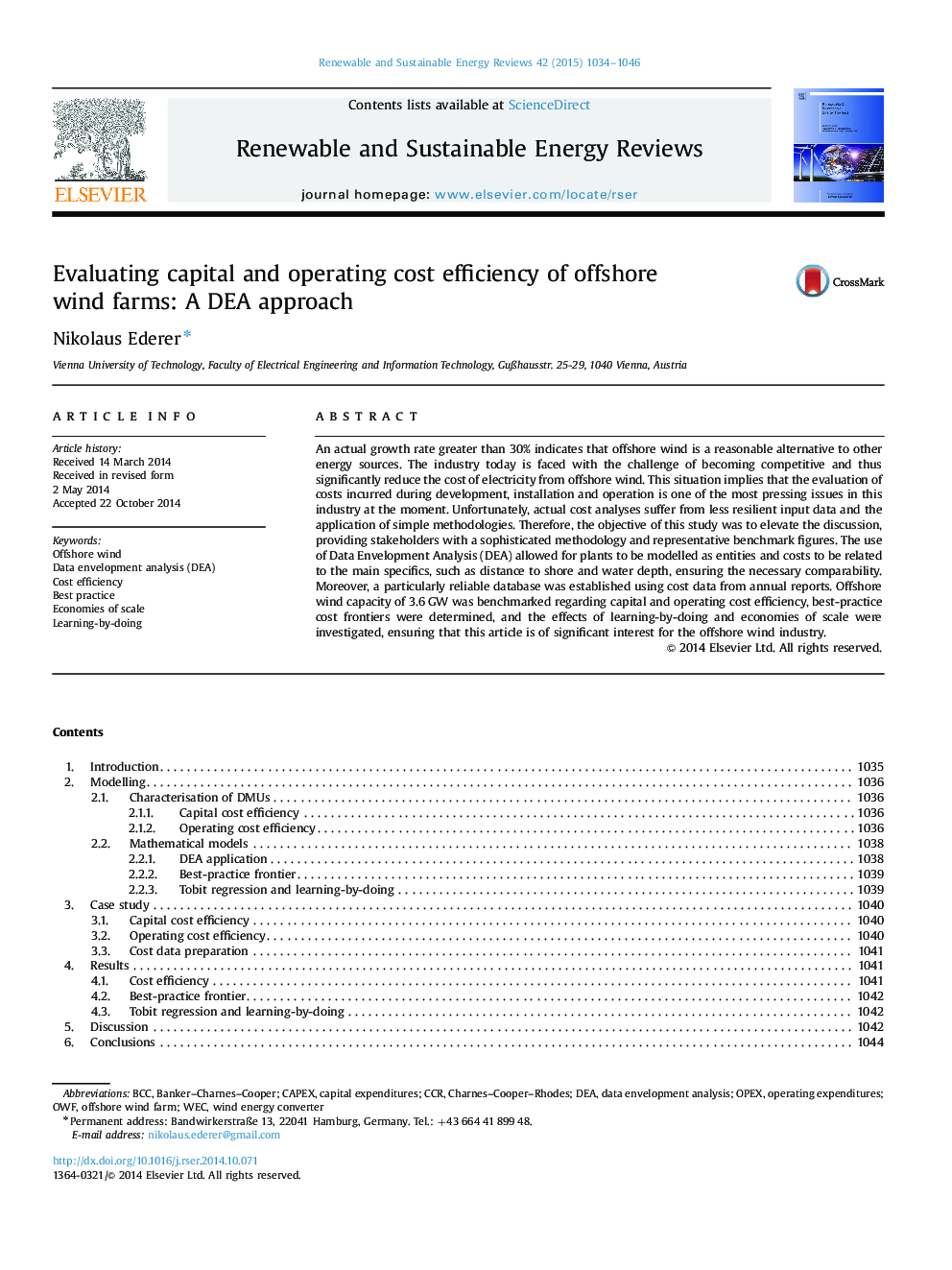| Article ID | Journal | Published Year | Pages | File Type |
|---|---|---|---|---|
| 8118085 | Renewable and Sustainable Energy Reviews | 2015 | 13 Pages |
Abstract
An actual growth rate greater than 30% indicates that offshore wind is a reasonable alternative to other energy sources. The industry today is faced with the challenge of becoming competitive and thus significantly reduce the cost of electricity from offshore wind. This situation implies that the evaluation of costs incurred during development, installation and operation is one of the most pressing issues in this industry at the moment. Unfortunately, actual cost analyses suffer from less resilient input data and the application of simple methodologies. Therefore, the objective of this study was to elevate the discussion, providing stakeholders with a sophisticated methodology and representative benchmark figures. The use of Data Envelopment Analysis (DEA) allowed for plants to be modelled as entities and costs to be related to the main specifics, such as distance to shore and water depth, ensuring the necessary comparability. Moreover, a particularly reliable database was established using cost data from annual reports. Offshore wind capacity of 3.6Â GW was benchmarked regarding capital and operating cost efficiency, best-practice cost frontiers were determined, and the effects of learning-by-doing and economies of scale were investigated, ensuring that this article is of significant interest for the offshore wind industry.
Keywords
Related Topics
Physical Sciences and Engineering
Energy
Renewable Energy, Sustainability and the Environment
Authors
Nikolaus Ederer,
